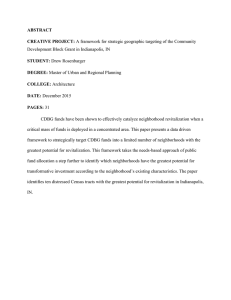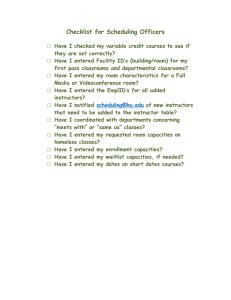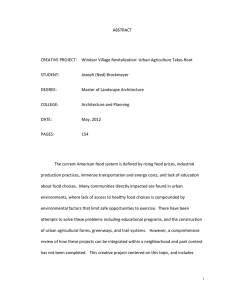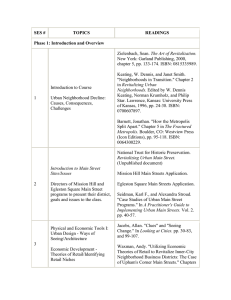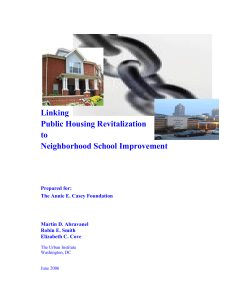Class 7: Asset and Capacity Assessment and identifying key assets.
advertisement
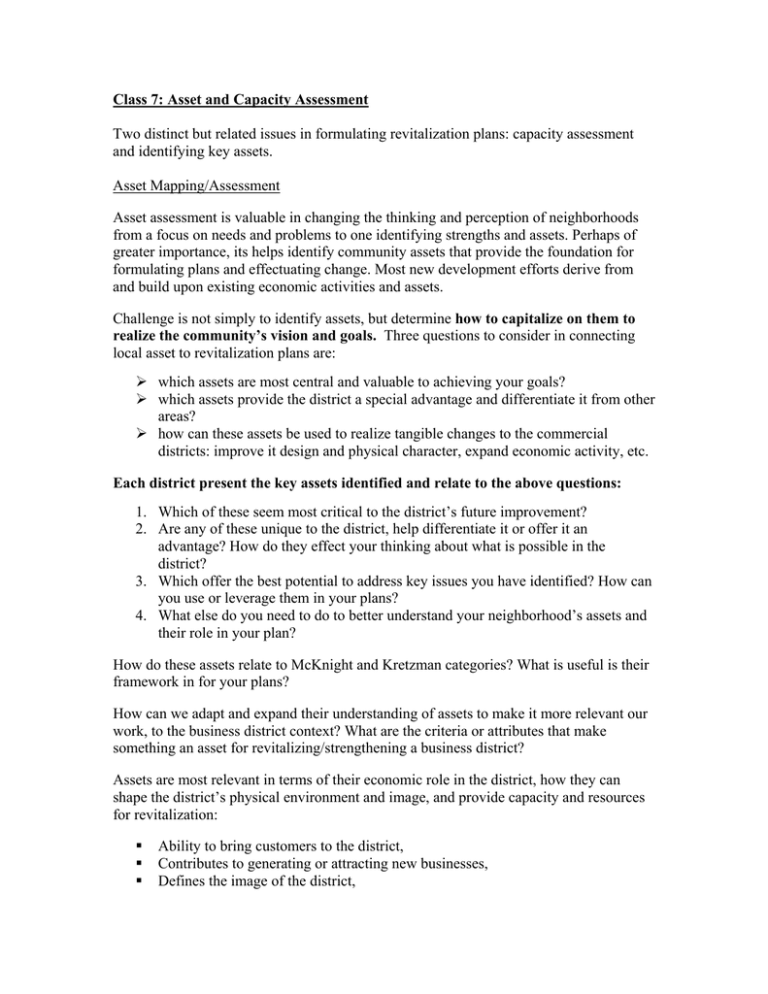
Class 7: Asset and Capacity Assessment Two distinct but related issues in formulating revitalization plans: capacity assessment and identifying key assets. Asset Mapping/Assessment Asset assessment is valuable in changing the thinking and perception of neighborhoods from a focus on needs and problems to one identifying strengths and assets. Perhaps of greater importance, its helps identify community assets that provide the foundation for formulating plans and effectuating change. Most new development efforts derive from and build upon existing economic activities and assets. Challenge is not simply to identify assets, but determine how to capitalize on them to realize the community’s vision and goals. Three questions to consider in connecting local asset to revitalization plans are: ¾ which assets are most central and valuable to achieving your goals? ¾ which assets provide the district a special advantage and differentiate it from other areas? ¾ how can these assets be used to realize tangible changes to the commercial districts: improve it design and physical character, expand economic activity, etc. Each district present the key assets identified and relate to the above questions: 1. Which of these seem most critical to the district’s future improvement? 2. Are any of these unique to the district, help differentiate it or offer it an advantage? How do they effect your thinking about what is possible in the district? 3. Which offer the best potential to address key issues you have identified? How can you use or leverage them in your plans? 4. What else do you need to do to better understand your neighborhood’s assets and their role in your plan? How do these assets relate to McKnight and Kretzman categories? What is useful is their framework in for your plans? How can we adapt and expand their understanding of assets to make it more relevant our work, to the business district context? What are the criteria or attributes that make something an asset for revitalizing/strengthening a business district? Assets are most relevant in terms of their economic role in the district, how they can shape the district’s physical environment and image, and provide capacity and resources for revitalization: Ability to bring customers to the district, Contributes to generating or attracting new businesses, Defines the image of the district, Makes the physical environment more attractive, accessible, comfortable, Contributes key resources (people, money, etc.) to revitalization work, Provide strong link to & help mobilize outside resources, etc. Capacity Assessment A critical issue for good, successful plans. Many plans gain little momentum because of capacity limitations and insufficient attention to implementation requirements. You need to think about implementation capacity in the early stages of planning and incorporate it into your plans and community relationships. Capacity is an especially challenging issue for Main Streets Districts as small, volunteer-based organizations with modest capacity. Implementing plans will depend on expanding their own capacity and on harnessing the capacities of other community organizations. For the purpose of business district planning, capacity assessment goes beyond the organization level to the districtwide or neighborhood level. The Glickman/Sevron Article, while focused on CDCs, provides a framework for thinking about capacity. What do you think about this framework? How relevant is it to the Main Streets context? Are any of the 5 capacity components more central to Main Streets revitalization? Resource, organizational, network, programmatic, political How would you apply it at a business district/neighborhood level versus individual organizational level? What is your current understanding of capacity for each MS organization and the commercial district? How can you gain a deeper understanding of these capacities? A complimentary approach to assessing capacity is to “map backward” from the specific the capacities needed to implement plans and achieve the desired outcomes. Which capacities already exist in the neighborhood, where do they exist, what is the Main Street District’s relationship with the entities that possess these capacities? What gaps in critical capacities exist? Based on your current knowledge of the district, ideas and potential plans, what capacity will be needed to implement your proposals? What do you know about their status in your district? How can you get this knowledge? Use some examples: Design guidelines Develop vacant buildings and lots Improve the streetscape Improve businesses skills and capacity (Infrastructure design and construction, commercial real estate development, façade/window display design, consumer promotion and marketing, individual business management/retail operations, business marketing and recruitment, public safety/community policing, advocacy for city services, volunteer recruitment/organizing, fund-raising/resource development)
